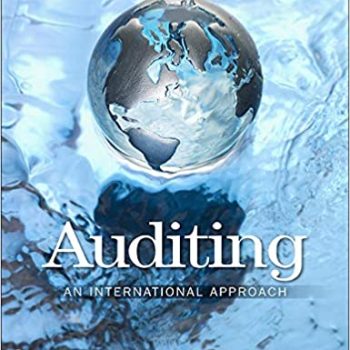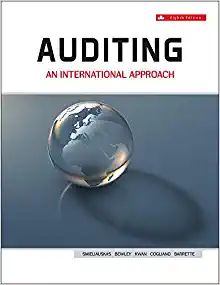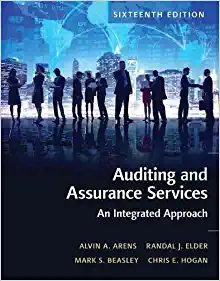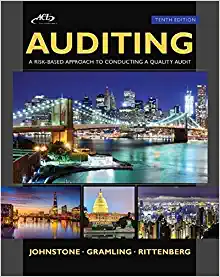Solution Manual For Auditing And Assurance 14th Edition
ISBN-10 : 0132575957, ISBN-13 : 978-0132575959
Chapter 1
1-1 (Objective 1-5) Explain the relationships among audit services, attestation services, and assurance services, and give examples of each.
1-2 (Objective 1-3) Discuss the major factors in today’s society that have made the need for independent audits much greater than it was 50 years ago.
1-3 (Objective 1-3) Distinguish among the following three risks: risk-free interest rate, business risk, and information risk. Which one or ones does the auditor reduce by per- forming an audit?
1-4 (Objective 1-4) Identify the major causes of information risk and identify the three main ways information risk can be reduced. What are the advantages and disadvantages of
each?
1-5 (Objective 1-1) Explain what is meant by determining the degree of correspondence between information and established criteria. What are the information and established criteria for the audit of Jones Company’s tax return by an internal revenue agent? What are they for the audit of Jones Company’s financial statements by a CPA firm?
1-6 (Objectives 1-1, 1-7) Describe the nature of the evidence the internal revenue agent will use in the audit of Jones Company’s tax return.
1-7 (Objective 1-2) In the conduct of audits of financial statements, it would be a serious breach of responsibility if the auditor did not thoroughly understand accounting. However, many competent accountants do not have an understanding of the auditing process. What causes this difference?
1-8 (Objective 1-6) What are the differences and similarities in audits of financial state- ments, compliance audits, and operational audits?
1-9 (Objectives 1-6, 1-7) List five examples of specific operational audits that can be conducted by an internal auditor in a manufacturing company.
1-10 (Objectives 1-5, 1-6) What knowledge does the auditor need about the client’s business in an audit of historical financial statements? Explain how this knowledge may be useful in performing other assurance or consulting services for the client.
1-11 (Objective 1-7) What are the major differences in the scope of the audit respon- sibilities for CPAs, GAO auditors, IRS agents, and internal auditors?
1-12 (Objective 1-8) Identify the four parts of the Uniform CPA Examination.
1-13 (Objective 1-5) Explain why CPAs need to be knowledgeable about information
technology, including e-commerce technologies.
3. A report stating whether the company has complied with restrictive covenants related to officer compensation and payment of dividends contained in a bank loan
agreement.
- An electronic seal indicating that an electronic seller observes certain practices.
- A report indicating whether a governmental entity has complied with certain
government regulations.
- A report on the examination of a financial forecast.
- A review report that provides limited assurance about whether financial statements
are fairly stated in accordance with U.S. GAAP.
- A report on management’s assertion on the company’s level of carbon emissions.
- A report about management’s assertion on the effectiveness of controls over the
availability, reliability, integrity, and maintainability of its accounting information
system.
- An evaluation of the effectiveness of key measures used to assess an entity’s success







Reviews
There are no reviews yet.